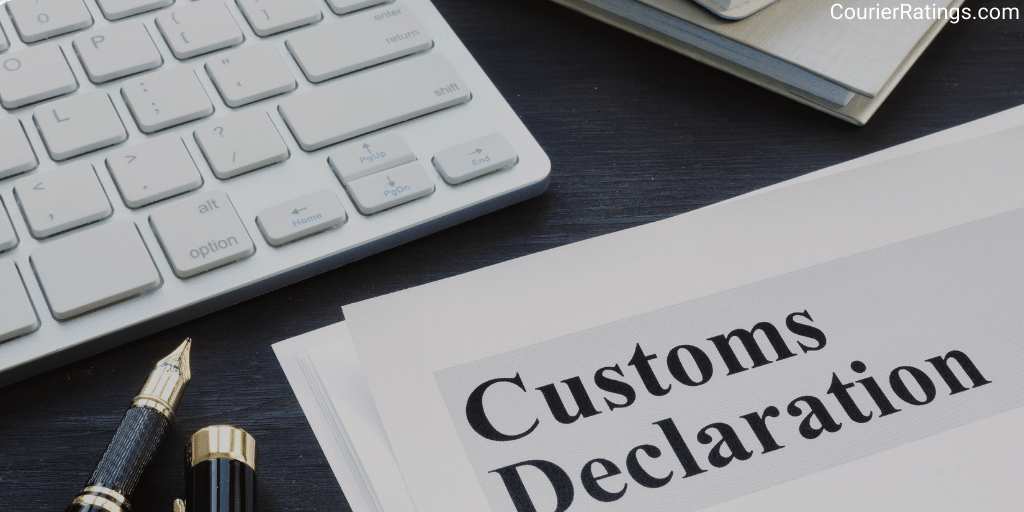USPS has provided a tracking update regarding an “Inbound into customs” delivery.
Wondering What does this mean? Are you concerned that customs will seize your package? or what will happen next?
Let’s know more about it in detail.

What does Inbound into Customs mean?
Your parcel has arrived at a USPS International Service Center in the USA and has been routed to customs, referred to as “inbound into customs.” Every overseas shipment that comes to the United States goes through this procedure, which is very typical.
Why is My Package Inbound into Customs?
All foreign-shipped goods must go through the customs clearance procedure. An International Service Center serves as this location for mail and parcels entering the United States (ICS).
New York, Los Angeles, Chicago, and Miami are the four primary USPS ICSs. You get a “processed through facility” status signal when your mail is lifted from the plane as it lands in the nation.
The products will be given to US Customs and Border Protection (CBP) for customs clearance after unloading. You will now see the status notice saying “Inbound into Customs.”
Inbound in Customs: What Happens?
For most things, the customs procedure is not a cause for concern. Your shipment won’t be instantly targeted by customs officials and opened without cause.
To ensure quick screening, all shipments will go through an X-ray machine. Further inspections are only done if a problem is found or believed to exist.
Your package could undergo a more comprehensive inspection if any of the following apply:
- The container releases a strong odor or liquid.
- The seal has been broken, or the package has been damaged.
- The origin of shipment comes from a nation under CBP’s watch list.
- Simply chosen for a chance spot inspection, the bundle.
- The scanner identified the shipment because it had abnormalities.
The shipment may be seized if you import something prohibited or if the necessary paperwork is incomplete.
How long will Customs hold my package?

According to USPS, “Inbound Into Customs” typically takes two to three days. It is typical to wait up to five days, and any longer gives a client cause to complain.
But the delays start to skew here because wait periods might run several weeks if your item has a problem. Once a circumstance arises, the package may fall into an “ICS Blackhole.”
Also, remember that USPS won’t be able to scan the consignment during this entire process.
Customers who are impatiently waiting for their packages are essentially provided with no information about their location as the box enters “Inbound into Customs.”
Your package may be detained at customs at a variety of times. You should remember that, except for “inbound in customs,” you won’t receive any more status updates while your item is with the CBP.
This is because the CBP and USPS are entirely distinct organizations. While it is in customs, USPS cannot scan your goods.
It is a good thing that activity with the ISC is sometimes hampered by a backlog when considering the tens of thousands of things the CBP must clear daily.
The Chicago ISC should study its procedures’ effectiveness, according to a recent recommendation from the USPS Inspector General’s office.
What are the reasons for the delays?
Your package may be detained at customs for a variety of reasons. The majority of which will be wholly beyond your hands.
The most frequent cause, presuming the materials are not in any manner forbidden, is a lack of incorrect or insufficient documentation. The shipper is accountable for this, and sometimes the existence of a problem won’t be disclosed.
Due to the enormous amount of shipments going through the ICS, it might take days, weeks, or even never notify the sender of faulty shipments. The consignment may also have difficulty with its packing and lose its labels.
Additionally, if the CBP chooses to randomly check your item outside of the parameters of usual procedures, this will cause a delay. However, there shouldn’t be more than a few days wait. The time your goods are kept “inbound into customs” will lengthen.
Also, Read: Does USPS Accept FedEx Packages?
What Should You Do If Your Package Is Stuck at Inbound into Customs?
If your package is stuck on this update, being patient is the first thing to do. There are several potential reasons for the delay. Contacting the sender or USPS won’t help if this has only been a few days.
Before contacting USPS customer services, it is advised to wait at least 7 business days for your item to be held on “inbound into customs.” If a shipment is stopped at an ISC, call the International Inquiry Center at 800-222-1811.
FAQs:
What does inbound to customs mean?
Inbound to customs means that your package has arrived at the customs office in the destination country and is currently being processed. During this time, customs officials will inspect the package to ensure that it complies with all applicable laws and regulations. They may also need to collect additional information from you, such as a customs declaration form or proof of payment for any duties or taxes that may be owed.
How long does a package stay inbound to customs?
This will vary depending on a number of factors, including the country of origin, the destination country, the contents of the package, and the current workload of customs officials. However, in general, you can expect a package to stay inbound to customs for anywhere from a few hours to a few days.
How long should a package be in customs?
The amount of time a package spends in customs can vary depending on the factors mentioned above. However, most packages are cleared within a few days. If your package is still in customs after a week, you may want to contact the shipping carrier to inquire about the status.
Conclusion
Your parcel has arrived at a USPS International Service Center in the USA and has been routed to customs, referred to as “inbound into customs.”
All overseas packages that arrive in the United States go through this procedure, which is very typical.
When your tracking information indicates that your shipment is “Inbound Into Customs,” it simply means that the ISC facility in New York City will be your parcel’s next stop before it reaches its final destination. I hope this post was helpful to you.

